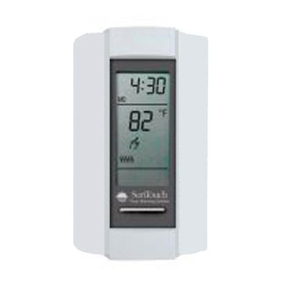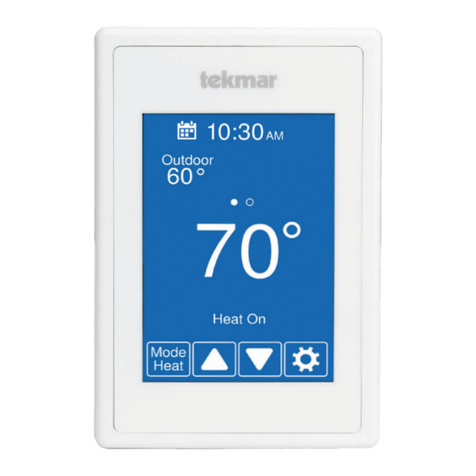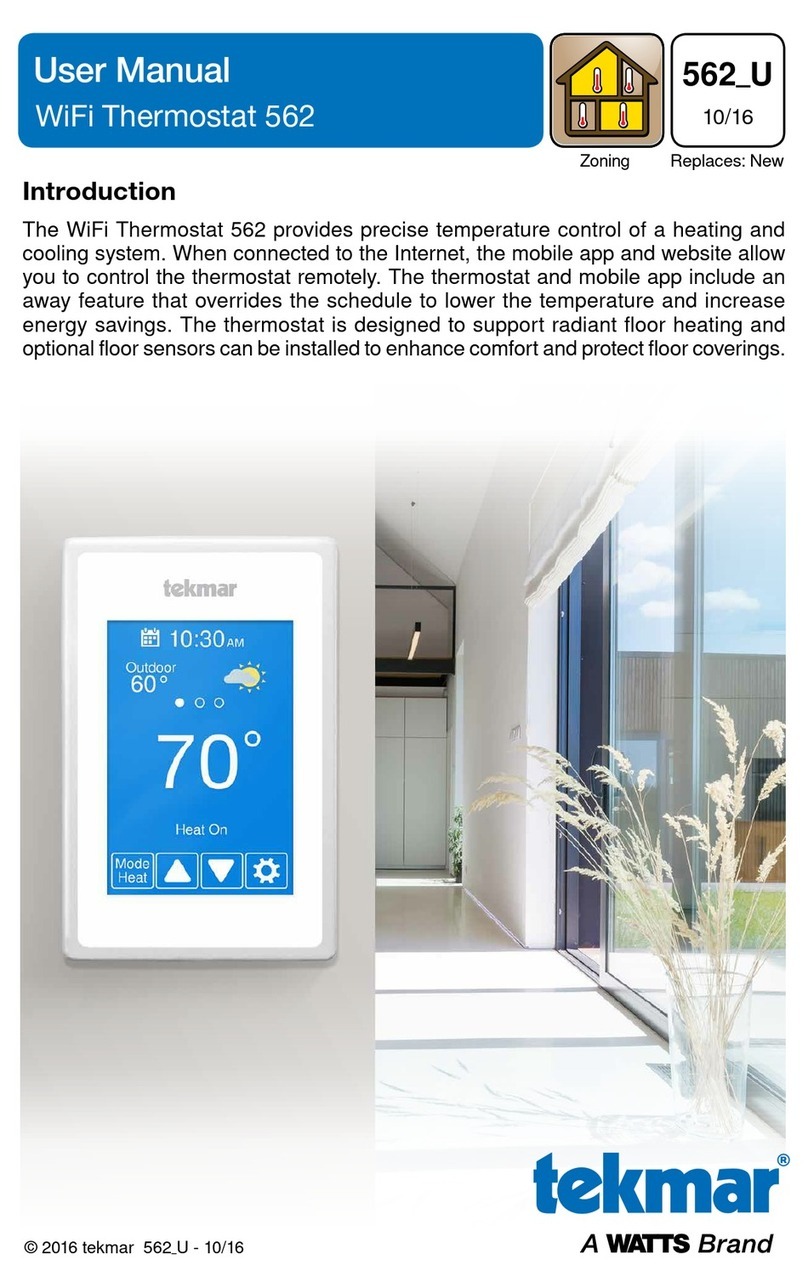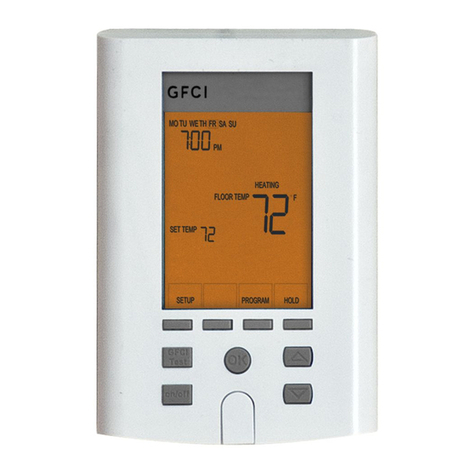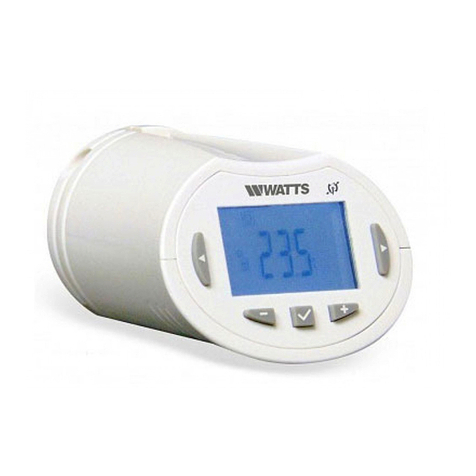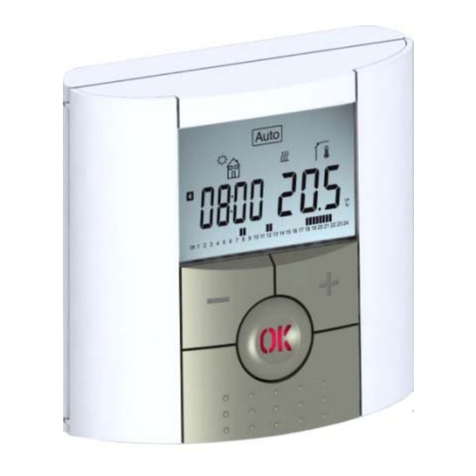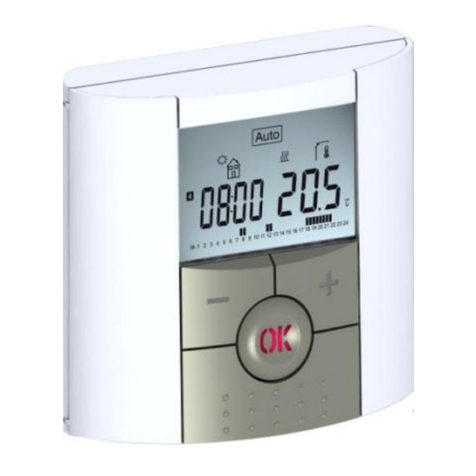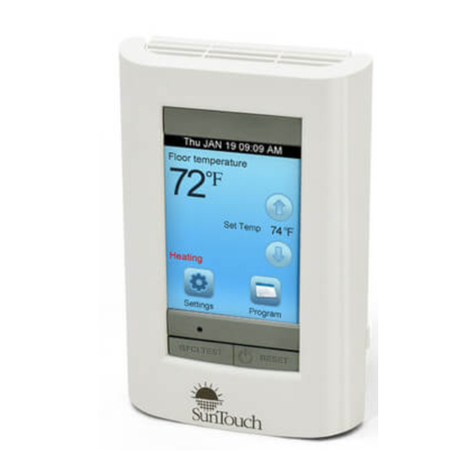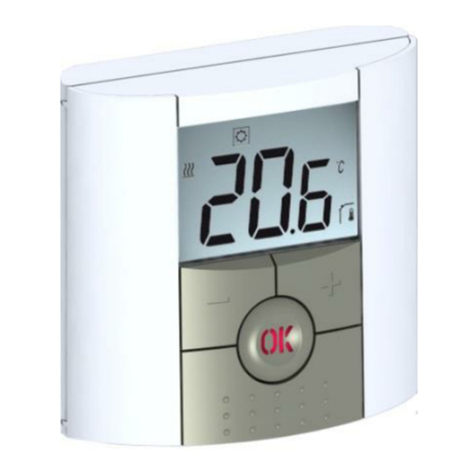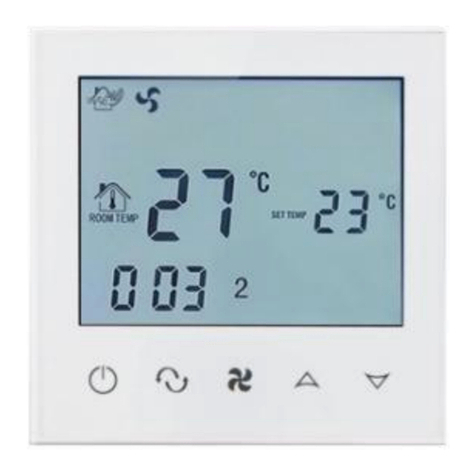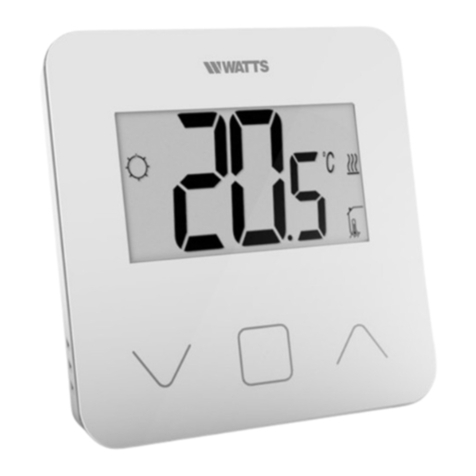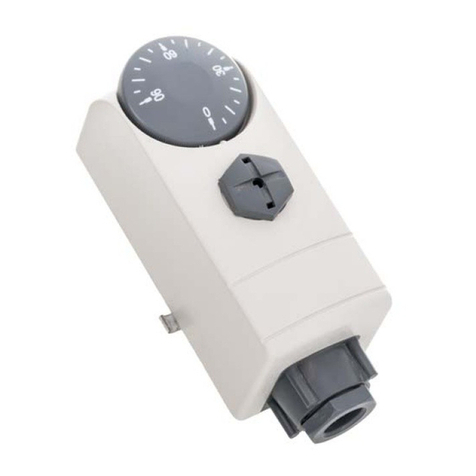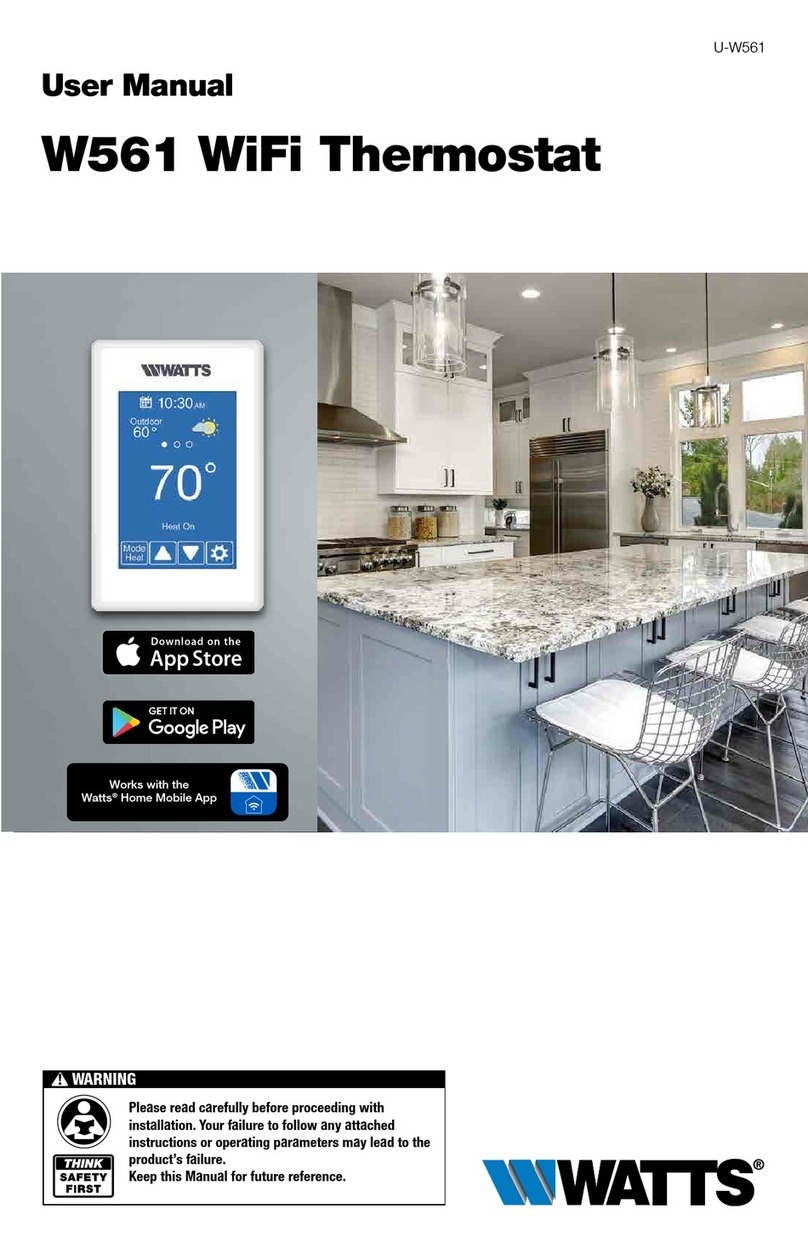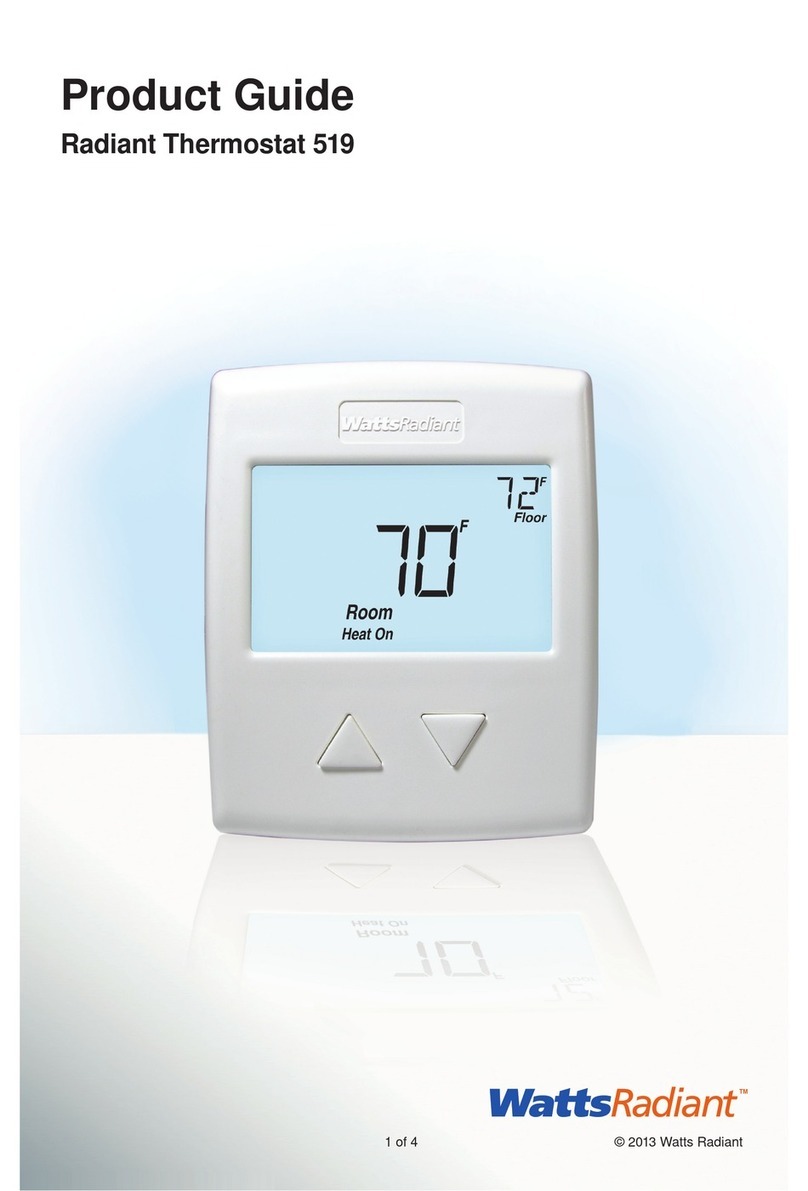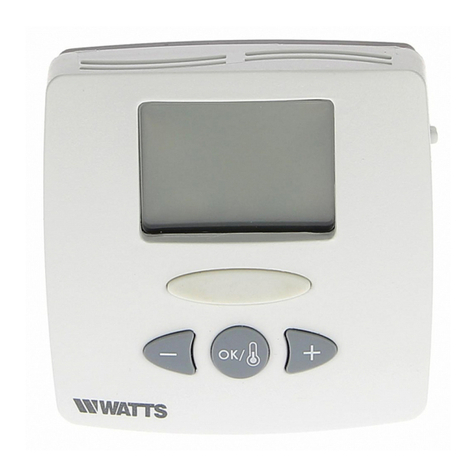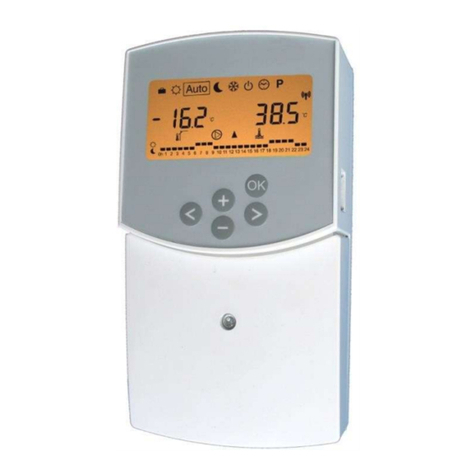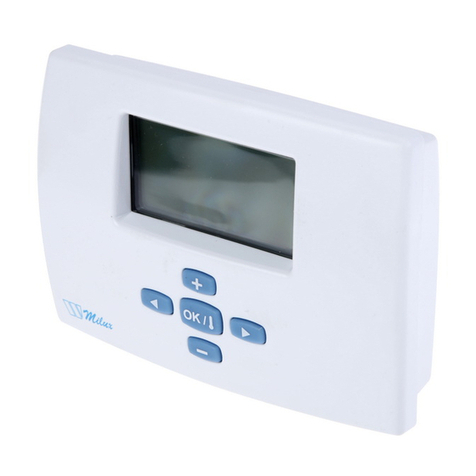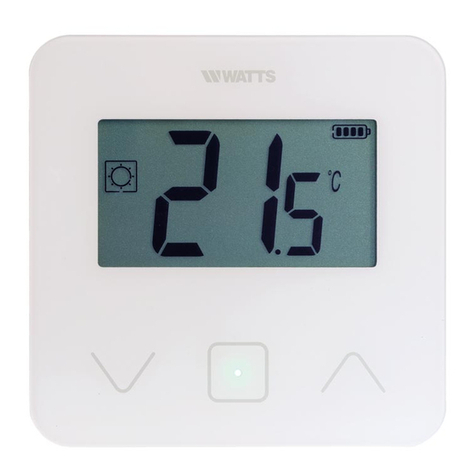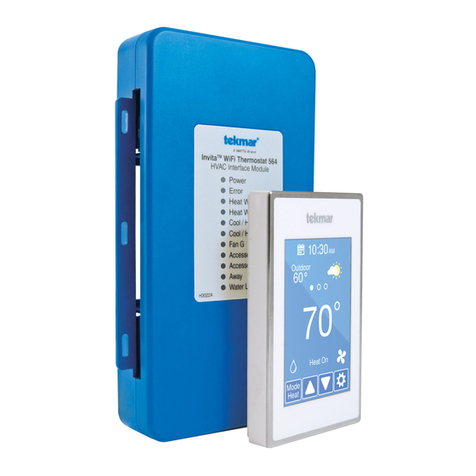
6. Pull the power supply wiring into this box, leaving about 6 inches of wire.
7. Pull the floor sensor wire and the power lead wires from your floor warming
system up the wall, into this box. Refer to your floor warming system
installation instructions for placement of the floor sensor tip into the floor area.
8. Mount the electrical box.
Owner’s Manual
Your new SunStat Dial thermostat is designed to control the voltage to
either a 120VAC or 240VAC resistive floor warming system.
Please follow this manual for complete installation and operation instructions.
If you have any questions or comments, try calling Technical Support at
1-800-276-2419.
Make sure you are qualified and are familiar with house wiring. This is a
line voltage device that could cause serious injury or damage if improperly
installed.
SunStat Dial
Dial Thermostat
Model 500710
1. Preparation
1. Unpack your thermostat and make sure everything is in good condition:
Thermostat•
Floor sensor•
Small screwdriver•
Mounting screws•
Wire nuts for wiring connections•
If any parts are missing or damaged, contact the store where you purchased
this thermostat. Do not install a damaged part.
2. Gather the following tools and supplies:
•Phillips screwdriver, hole saw
•Wire strippers, “fish tape”, other electrical tools
•Electrical box for thermostat:
a. If you are connecting to power leads from only 1 or 2 floor warming
systems, you may use a single-gang, 31⁄2inch deep box.
b. If you are connecting to power leads from 2 or 3 floor warming systems,
use a 4x4x21⁄8 inch or deeper box (not a 2-gang box) when your wall studs
are still exposed. Install a single-gang “mud-ring” cover on the box before
installing drywall materials.
c. For more than 3 floor warming systems or other layouts, you may need
to install a junction box. See the installation instructions for your floor
warming system for more information.
ALWAYS: Wire all circuits as Class 1, Electric Light and Power Circuits.
ALWAYS: Wire all circuits with insulation rated 600V minimum.
ALWAYS: Mount this control only to a grounded metallic box or a
nonmetallic box.
ALWAYS: Use power supply wires suitable for at least 90°C.
CAUTION: High voltage – disconnect power supply before servicing.
2. Installation
Remove the Thermostat Face
1. Remove the thermostat Front Module
from the Power Module by opening the door
and loosening the screw.
2. Pull outward near the bottom on the
Front Module and lift off.
Prepare the Wiring
1. Find a location for your thermostat. It
is suitable for indoor use only, on insulated
or uninsulated walls. Locate it about 41⁄2feet to 5 feet above the floor on an
inside wall. Avoid placing it near other heat sources such as hot-water piping,
heat duct, wall-mount lighting, and direct sunlight to help prevent adversely
affecting the thermostat.
2. Turn off the power to the floor warming system at the main circuit panel
before doing any electrical work.
3. A qualified electrician should run a dedicated circuit from the main circuit
panel to the thermostat location.
4. If a dedicated circuit is not possible, you may tap from another circuit in the
room. Make sure there is enough load capacity (amps) to handle the addition
of your floor warming system, and that it is NOT wired in series with any other
device, including other GFCIs.
5. The circuit breaker in the main circuit panel should be 15 amps maximum
for a floor warming system totaling 12 amps or less. For larger systems up to
15 amps, use a 20 amp maximum circuit breaker. Never exceed 15 amps on
this thermostat.
power
module
front
module
5
sensor
Connect Wires
1. Match and connect the two
wires marked “LINE1” and
“LINE2” to the power supply wires
using the wire nuts provided.
2. Gently tug on the wires to
make sure they are secure,
otherwise a wire could loosen
and cause failure.
3. Overwrap the wire nuts with
electrical tape to better secure
them to the wires.
4. Match and connect the two
wires marked “LOAD1” and
“LOAD2” to the floor warming
system lead wires and secure
these wires the same way.
5. Connect the house ground
wire to the green lead wire(s) of
your floor warming system.
6. Insert the ends of the floor
sensor wire into the “SENSOR”
terminals (1 and 2) and tighten
the screws. There is no polarity,
so it does not matter which wire
end goes into which terminal.
CAUTION: Before continuing,
make sure your power supply
voltage matches the voltage
rating of your floor warming
system.
Connecting 240V to a 120V floor warming system will cause overheating and
damage to the system and may damage the control, other wiring, floor cover-
ings, etc.
SunStat Relays
1. If you want to use your thermostat to drive a SunStat Relay(s) (ask
your dealer about this convenient way to control larger systems with one
thermostat), first read and follow the instructions for the SunStat Relay
thoroughly.
2. Pull 2-conductor wire, size 18- to 24-gage, through the wall from the
SunStat Relay, into this electrical box.
3. Connect the wire ends into the “RELOUT” terminals (3 and 4) and tighten
the screws (no polarity).
Mount the Thermostat
1. Carefully fold and press the wires
back into the electrical box. Do not use
the thermostat to push them in, as this
may cause connections to loosen and
possible failure.
2. Secure the thermostat Power Module
into the box with the mounting screws
provided.
3. Carefully snap the Front Module onto
the Power Module.
4. Tighten the screw.
5. Switch on the power at the main
circuit panel.
NOTE to contractors: After installing
the thermostat, be sure to:
a. Switch on the thermostat and turn up the temperature to make sure it
is heating for a few minutes (section 3)
b. Test the GFCI (section 3).
1-4
from
power
supply
to
floor
warming
system
